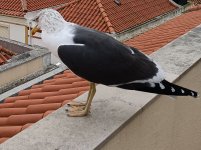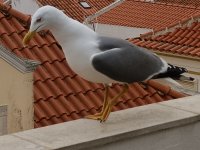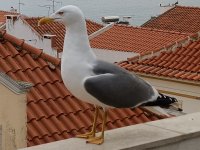Luís Vieira
Member

Hi everyone,
I was looking back at some photos that I took on January 2nd 2022 with my cell phone in Sesimbra, a small town on the west coast of Portugal, south of Lisbon. I assume that the gull with the darker back is Larus fuscus, and appears to have characteristics of Larus fuscus intermedius. I add for comparison a photo of a (likely) L. michahellis gull taken at the same time in the same exact location. None of the photos were treated in any way. Unfortunately the photo of the putative L. fuscus gull is the only one I got. Would you please give me your expert opinion on the gull with the darker back?
Thanks a lot.
Luís
I was looking back at some photos that I took on January 2nd 2022 with my cell phone in Sesimbra, a small town on the west coast of Portugal, south of Lisbon. I assume that the gull with the darker back is Larus fuscus, and appears to have characteristics of Larus fuscus intermedius. I add for comparison a photo of a (likely) L. michahellis gull taken at the same time in the same exact location. None of the photos were treated in any way. Unfortunately the photo of the putative L. fuscus gull is the only one I got. Would you please give me your expert opinion on the gull with the darker back?
Thanks a lot.
Luís






